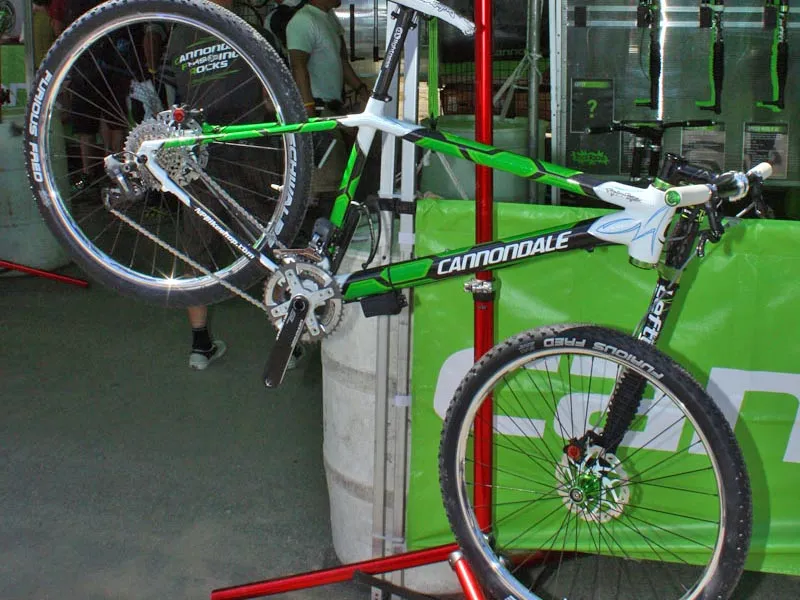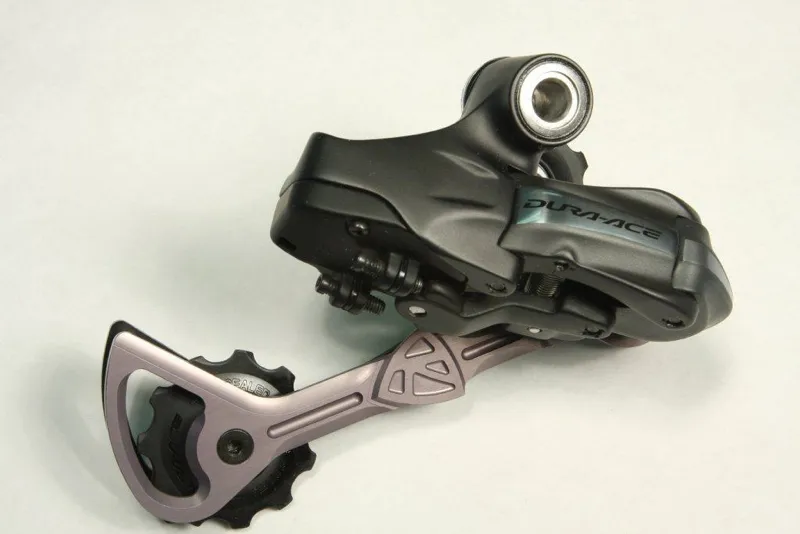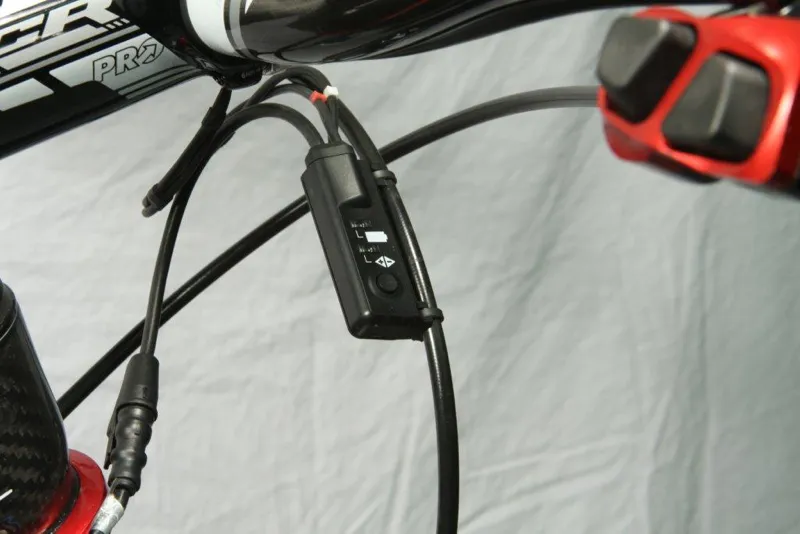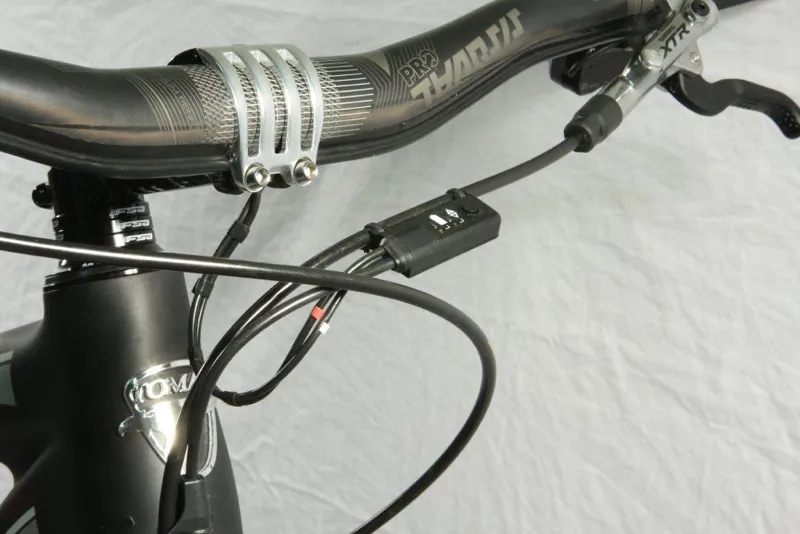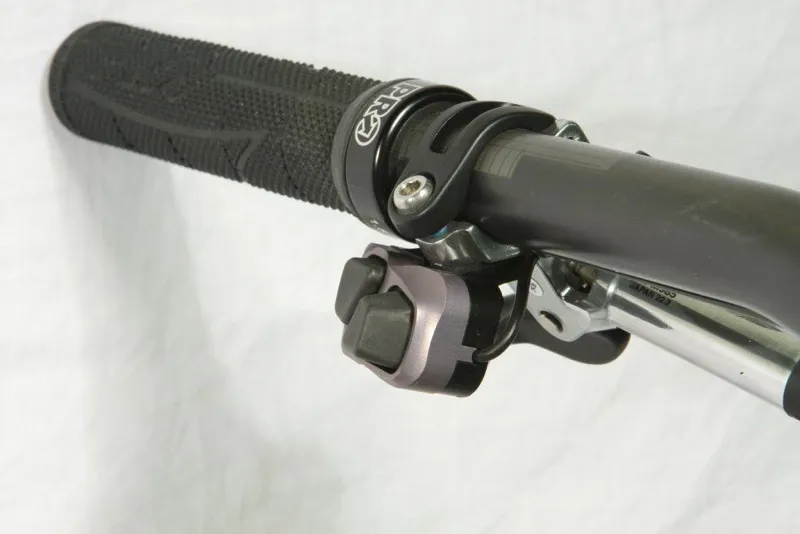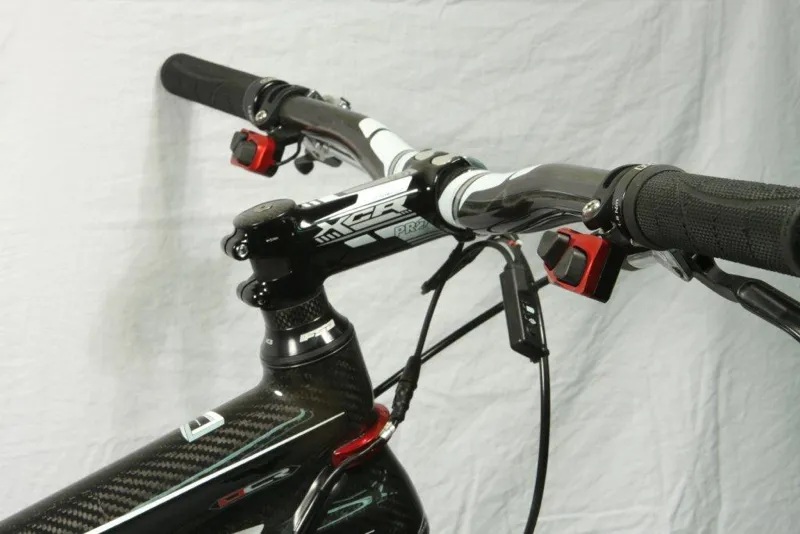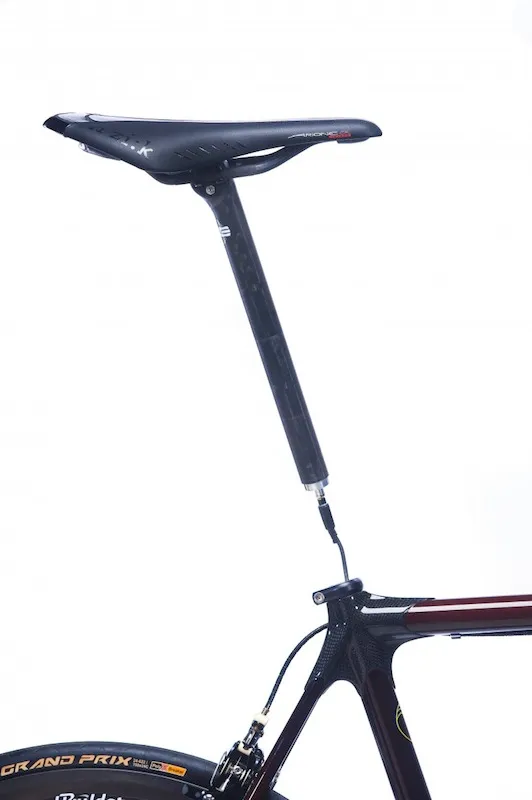A growing cottage industry has started up in the US based around hacks of Shimano's Dura-Ace Di2 electronic groupset. Small companies have created a whole range of products, from prototype wireless systems to mountain bike variants, as well as devising cunning ways to hide batteries and cabling.
Di2, tuned for mountain bikes
Among the first to custom tune and hack Shimano Di2 shifters for mountain bikes were California's Newbury Park Bicycle Shop, who showed off their work at the 2010 edition of the Sea Otter Classic on a fully customized Flash hardtail that took pride of place on the Cannondale stand.
Idaho's K-Edge, best known for their chain catchers, have also taken factory-spec Dura-Ace Di2 shifters and repurposed them for mountain bike use, in the form of their Ki2 kits. These combine custom-made thumbshifters that use the Di2 buttons with a new pulley cage on the rear derailleur.
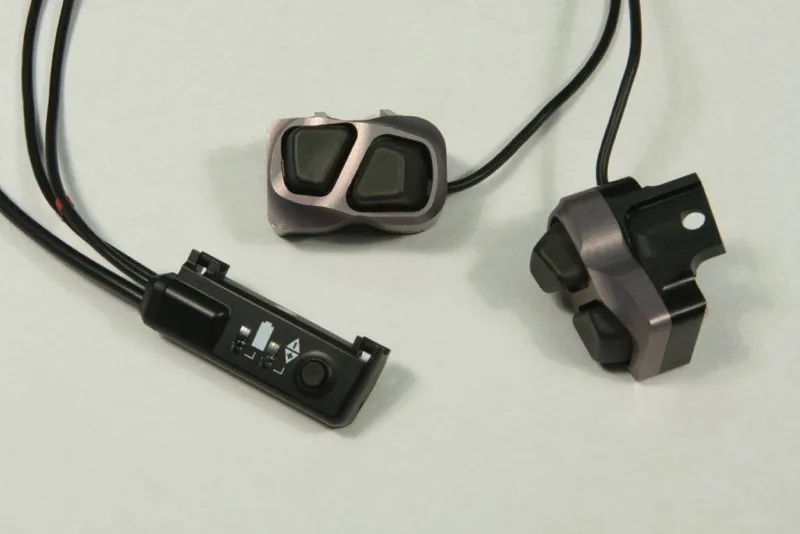
K-Edge's mountain bike retrofit bracket for the Di2 satellite shifter
Another company pioneering Di2 tuning are Arizona's Fair Wheel Bikes, who showed their mountain bike conversation at Interbike last year and to top it plan to roll out a wireless version at this year’s show. “We’re working on the wireless prototype now,” the shop's Jason Woznick told BikeRadar.
“We’re really happy with the improvements we made to the wired mountain conversation, which has sequential shifting up and down with one button. We've refined the button placement and we're working on the timing.”
According to Woznick, there's something even bigger in the pipeline. “Our designer is building a special gadget,” he said. "Even I have no idea what it's going to be, but he says it's going to be special.”
It's this type of innovation in the aftermarket world that's now encouraging others. “It's an interesting market,” Joe Savola of K-Edge told BikeRadar, adding that his company have sold enough Ki2 kits that they’ve recouped on their investment. “The market for these kits is relatively small, but we're a small company.”
Savola said there were still many opportunities out there for smaller shops and designers to strike while the time is right. “I personally think we have about 18 to 24 months until Shimano enter this market,” he said. “We aren’t naïve; we know they’re working on it. We know Shimano are probably developing something for mountain bikes right now.”
The way Savola sees it, the aftermarket component makers are actually helping Shimano, by giving them the chance to gauge the reaction of mountain bikers to electronic shifting. “Right now there are only so many people that are going to spend this kind of money on a mountain bike groupo," he said. "So Shimano have no risk. They’ll get the feedback and see how it works in the (off-road) environment.”
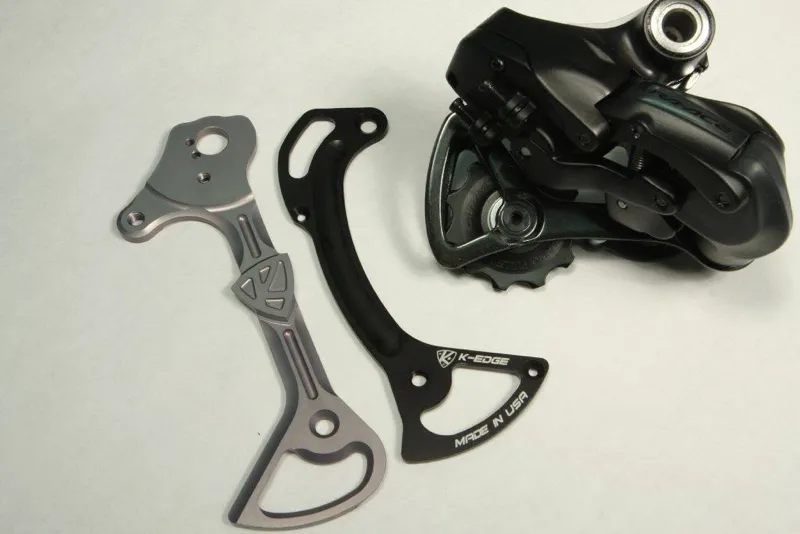
K-Edge's pulley cage kit
Whether the Japanese component giants see things the same way remains to be seen. After all, Di2 has already performed well in the cyclo-cross world, where it was used with success last season.
According to Wolznick, Fair Wheel are doing a lot of their work with Di2 for the fun of it, and many of the prototypes are unlikely to make it to production – not because they're poorly designed but because they can’t follow through for business reasons. “Campy (Campagnolo) and Shimano have all the patents for every shifting component possible,” he said. “Even for things they don’t ever plan on producing.”
Road tuners, too
For now, Shimano seem to have their attention on the road side of things, where they're introducing Di2 to Ultegra for 2012. Aftermarket companies are also keeping their eyes on the road, or at least road bikes, where there's major focus on hiding the battery. At last month’s EICA show in Milan, Italy Colnago introduced their new CF9, which will incorporate Dura-Ace Di2 electronic shifting with the battery located in the seat tube.
Back in the US, Pat Gerke of Icarus Lights has been working with Fair Wheel Bicycles to create a battery that can be mounted internally. The solution is a cylinder that fits 31.6mm seatposts. The battery is chargeable via a Micro-USB port – the same type used on many smartphones – and charge time is about four hours.
“The units evolved by chance,” Gerke told BikeRadar. “I make bicycle headlights and I knew someone at Fair Wheel, and since I make batteries, I decided to adapt them for the electronic shifting.” Gerke's Di2 battery, based on his USB rechargable tail-light designs, comes in two configurations. The first has a built-in charger, which requires the post to be pulled out of the seat tube.
The second, aimed at custom frame builders, comes with an external charging port that can be built into the frame. “Riders can pull up, lean the bike next to the wall and plug their standard Micro USB charger right into the bike,” said Gerke, adding: “I wanted to use this now fairly standard charger as it means racers and other riders have one less thing to bring while traveling.”
California's Calfee Design also sell a custom Di2 seatpost battery, which is reportedly lighter and more efficient than the Shimano original. According to the company's repairs manager, Heather Ross, some riders have gone as far as 10,000 miles in between charges.
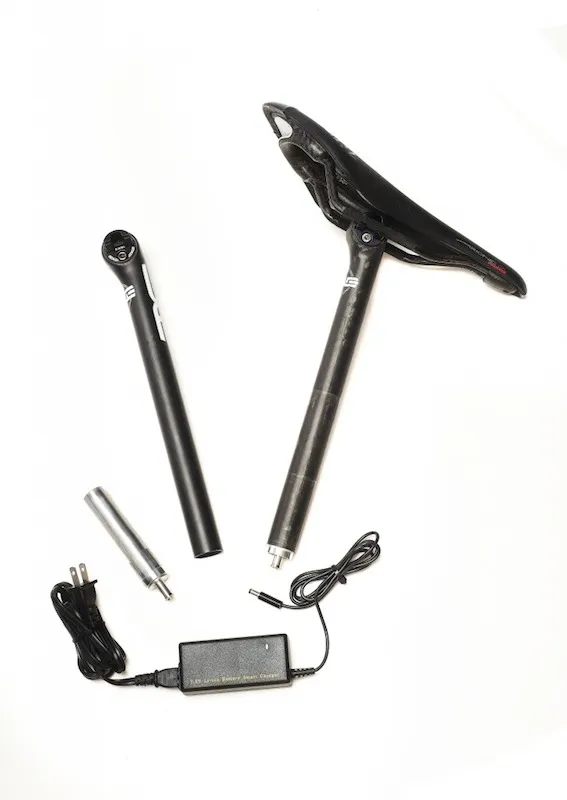
Calfee's internal battery kit
“Those are people who live in warmer, flatter areas like Florida,” said Ross, suggesting that front derailleur use is where the most significant battery drain occurs. However, feedback from customers suggests that even riders in Colorado are getting 4,000 miles between charges. And that's something Shimano are bound to notice.
From an aesthetic point of view, the other part of Di2 that can spoil a road bike's sleek lines is the cabling. Last fall, Calfee introduced a complete retrofit carbon fiber frame solution which eliminates the need for cable ties, adhesives and even external mounts.
The process includes modifications to the wiring harness, battery, seatpost and frame, so it isn’t a run-of-the-mill aftermarket solution. “We’re able to retrofit most any carbon fiber frames,” said Ross. “We use our skills with carbon repairs, and this is a complete package – we can fill old cable stops and cable guides, and even do paint touch-ups.”
Shimano are already refining their Di2 technology – cable routing is much neater on the new Ultegra version than on the top-tier Dura-Ace original, for example – so it'll be interesting to see what they come up with over the next couple of years. But there'll always be a place for aftermarket manufacturers who are willing to push the envelope, and we can't wait to see what they come up with next. Watch this space.
